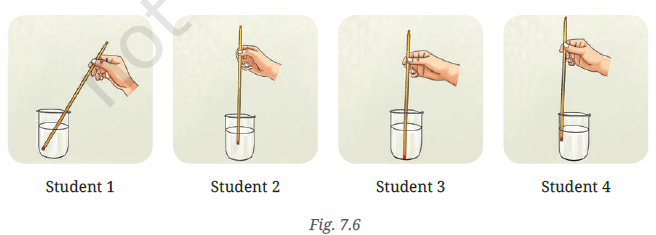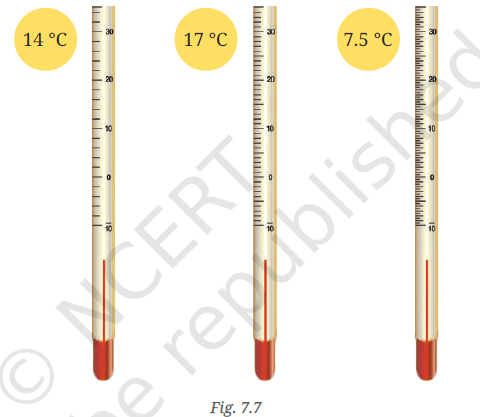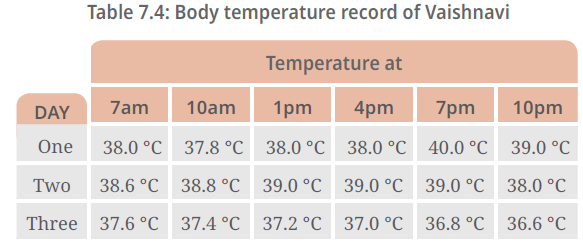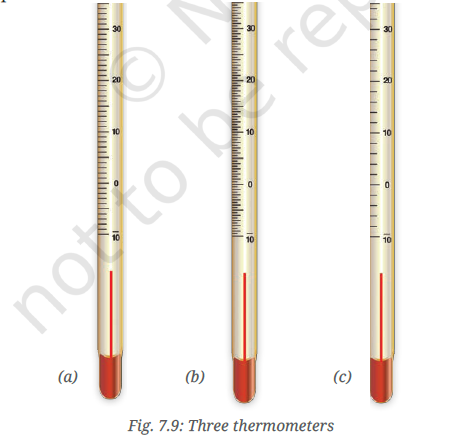At Bodhiclasses, we simplify science for school learners through visually rich content, hands-on activities, and clarity-driven explanations. This post contains important NCERT-based questions and answers from Chapter 7 of the Grade 6 Science textbook, titled “Temperature and Its Measurement.” It covers all key concepts about thermometers, temperature scales, and measurement techniques, making it an essential resource for Class 6 students.

Q1. The normal temperature of a healthy human being is close to: _______
(i) 98.6 °C
(ii) 37.0 °C
(iii) 32.0 °C
(iv) 27.0 °C
Answer:
(ii) 37.0 °C
Q2. 37 °C is the same temperature as: ________
(i) 97.4 °F
(ii) 97.6 °F
(iii) 98.4 °F
(iv) 98.6 °F
Answer:
(iv) 98.6 °F
Q3. Fill in the blanks:
(i) The hotness or coldness of a system is determined by its temperature.
(ii) The temperature of ice-cold water cannot be measured by a clinical thermometer.
(iii) The unit of temperature is degree Celsius.
Q4. The range of a laboratory thermometer is usually:_________
(i) 10 °C to 100 °C
(ii) –10 °C to 110 °C
(iii) 32 °C to 45 °C
(iv) 35 °C to 42 °C
Answer:
(ii) –10 °C to 110 °C
Q5. Who among the four students followed the correct method to measure temperature using a laboratory thermometer (based on Fig. 7.6)?

Answer:
(iv) Student 2 – The correct technique includes holding the thermometer vertically, not touching the bulb to the beaker, and reading the temperature at eye level while immersed.
Q6. Colour the red column on thermometer drawings (Fig. 7.7) as per temperatures:
- 14 °C
- 17 °C
- 7.5 °C

(Instructional – Students are to colour the thermometer illustrations accordingly by extending the red line to each temperature given.)
Q7. Observe Fig. 7.8 and answer:

(i) What type of thermometer is it?
Answer: Laboratory thermometer
(ii) What is the reading of the thermometer?
Answer: Based on the figure, assume for example: 27.5 °C
(iii) What is the smallest value that this thermometer can measure?
Answer: 1.0 °C (or as per the number of divisions shown – generally 1°C per division)
Q8. A laboratory thermometer is not used to measure our body temperature. Give a reason.
Answer:
Because it is not designed for the limited range of human body temperature and it must be read while immersed in the object. Clinical thermometers are more accurate for this purpose.
Q9. Vaishnavi’s Temperature Record:
Based on Table 7.4:

(i) What was Vaishnavi’s highest recorded temperature?
Answer: 40.0 °C
(ii) On which day and time was her highest temperature recorded?
Answer: Day One at 7 PM
(iii) On which day did Vaishnavi’s temperature return to normal (around 37 °C)?
Answer: Day Three
Q10. If you have to measure 22.5 °C, which thermometer will you use (Fig. 7.9)? Explain.

Answer:
Choose the thermometer (b) with 0.5 °C division markings and a range that includes 22.5 °C. This ensures accurate reading for decimal values like 22.5 °C.
Q11. The temperature shown by the thermometer in Fig. 7.10 is:

Answer:
Assuming the thermometer shows 2.5 °C more than 25 °C, the correct answer is:
(ii) 27.5 °C
Q12. A laboratory thermometer has 50 divisions between 0 °C and 100 °C. What does each division measure?
Answer:
Each division measures:
(100 – 0) ÷ 50 = 2 °C
Q13. Draw the scale of a thermometer where each smallest division is 0.5 °C, from 10 °C to 20 °C.
Answer:
A diagram should show:
- 10 large divisions from 10 °C to 20 °C.
- Each large division further split into 2 smaller ones, each representing 0.5 °C.
Q14. Someone says she has a fever of 101 degrees. Is it in Celsius or Fahrenheit?
Answer:
It is most likely in Fahrenheit, as 101 °C would indicate dangerously high temperatures incompatible with life.
101 °F ≈ 38.3 °C – a common fever reading.
🔑 Key Concepts Covered:
- Clinical and laboratory thermometer usage
- Celsius, Fahrenheit, and Kelvin scales
- Body temperature ranges and weather temperature tracking
- Proper method of reading thermometers
- Real-life application through experiments and observations

